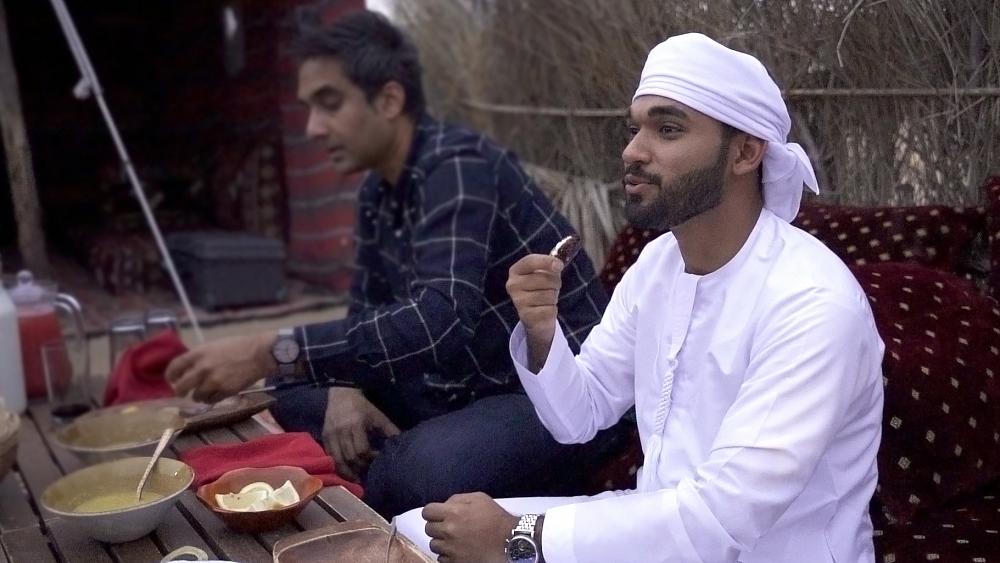
The Islamic holy month of Ramadan is estimated to begin on 2 April in 2022, at the first crescent moon sighting.
This 30-day celebration of faith will see 1.6 billion Muslims around the world focus on their religion this spring.
Muslims are required to fast during daylight hours, reinforce their commitment to their faith, perform special prayers, recite the Qur’an, make charitable donations and, when possible, make a Hajj pilgrimage to Mecca.
But while the pillars of Islam and Ramadan remain the same, customs vary from one country to the next. Here, we take a look at three destinations and how the month looks different in all of them.
Supersized iftars in the UAE
Say “Ramadan Kareem” to another side of Dubai during the Holy Month. This fast-paced, popular holiday destination slows down during Ramadan and iftar and suhoor meals become the focus of each day.
Fasting helps worshippers focus on their relationship with Allah and appreciate the plight of those less fortunate, while iftar – served after sunset – is an opportunity to gather with friends and family and share traditional Arabic cuisine.
Before dawn breaks, Muslims may have a light meal called suhoor. At home, this is usually taken just prior to dawn, but many restaurants in Dubai serve suhoor as a second sitting straight after iftar or as a late-night supper around 10pm or 11pm.
As night falls, hungry diners descend upon the UAE’s glamorous five-star hotels. Ballrooms undergo majlis-inspired makeovers, draped in red woven Bedouin fabrics, with oud players sitting cross-legged in corners plucking strings on pear-shaped lutes. When ballrooms aren’t large enough to accommodate demand, glamorous tents are erected. Atlantis, The Palm’s Asateer Tent is among the most renowned, lined with ruched white satin, strung with more than a hundred crystal lanterns.
Alternative iftars can be found at Dubai Opera, where the theatre is converted into a dining room, and at art hub Alserkal Avenue where multi-purpose space Inked will serve ‘Cook Me a Story’, a tasting menu featuring historical Iftar recipes from the region.
Ramadan lanterns in Egypt
In Egypt, homes are decorated with fawanees (lanterns), which children also hold as they perform traditional Ramadan songs for their communities.
In Cairo, a cannon at the Ciatdel of Saladin is fired to announce the start of iftar. The ceremony is televised and iftar is commonly enjoyed at home or in local cafes where the community can come together to break the fast and perhaps enjoy a shisha – Muslims must abstain from smoking during daylight hours.
Before dawn, a mesaharati drummer walks through the streets of Egyptian neighbourhoods waking people for suhoor.
Ramadan markets in Malaysia
More than 60 per cent of Malaysians celebrate Ramadan and they sometimes gather at the graves of loved ones to remember those who have passed, and many host rumah terbuka or “open house”. Beginning on the third or fourth day of Ramadan and continuing for 10 days, homes are opened to community members, regardless of race, ethnicity or religion. Passing tourists often get lucky with an invite, too.
Night markets are also popular dining spots after sunset, open to all, serving the masses as they break the fast with affordable street food feasts. In the small hours, some beaches, such as Batu Burok Beach in Kuala Trengganu, play host to suhoor gatherings where vendors dish up picnic treats for diners before dawn.
What’s on the iftar menu?
Typically, Iftar begins with milk and dates, echoing the way Prophet Muhammad broke his fast. Seasonal juices are also popular and in the UAE, jallab is the traditional choice, made with dates, grape molasses and rose water. In recent decades, the British soft drink Vimto has become associated with Ramadan, with special edition gift bottles for sale in local supermarkets.
In Egypt, intensely sweet qamar el-din apricot juice made from dried apricots is popular, while in Malaysia, sugarcane juice, soy milk or bandung (evaporated milk with rose syrup) are on the menu at almost every Berbuka Puasa (Iftar in Malaysian)
Main courses are most often a mix of rice and meat. In the UAE, lamb ouzi – a dish of seasoned rice and roast lamb representing sacrifice – often takes centre stage. Egyptians favour rice with mahshi (stuffed vegetables) and meat. Malaysians eat everyday dishes such as spiced chicken and rice, nasi lemek rice cooked in coconut milk or simple chicken satay from the Ramadan bazaar food stalls.
Ramadan desserts range from Umm Ali bread pudding in the UAE to Malaysia’s cendol, a mix of sweet, chilled milk, beans and herb jelly cubes. Then there’s kunafa, a sweet molten cheese sandwiched in syrup-soaked layers of crispy noodle-like pastry.
For more, please visit the Destination Dubai hub on Euronews.com.








